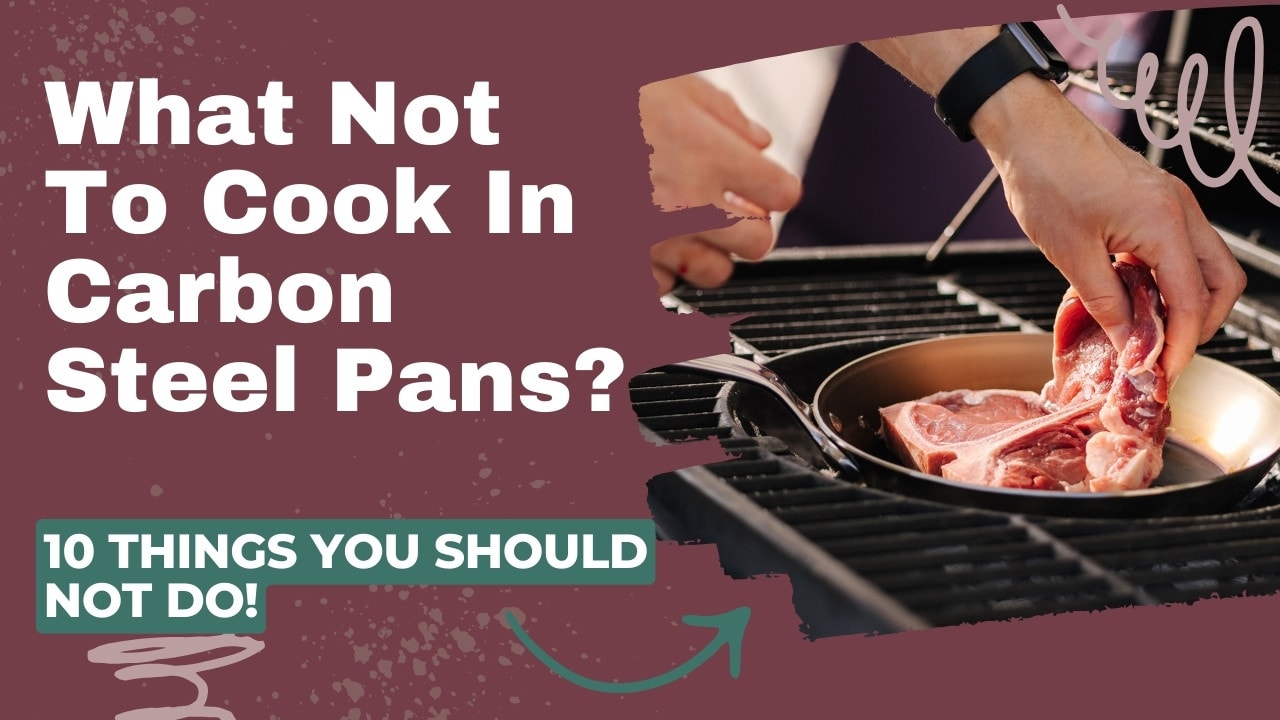Extremely versatile and durable, carbon steel has been a go-to cookware material of many cultures for centuries. A carbon steel pan is a piece of wrought iron that can withstand temps up to 1200°F, so you might think that it’s indestructible no matter what you cook in it! Unfortunately, that’s not quite the case.
There are several categories of foods that you should not cook in a carbon steel pan and some oils that aren’t ideal either. Cooking the wrong thing in carbon steel can destroy your seasoning or even warp your pan!
What Not To Cook In Carbon Steel Pans?
The worst thing to cook in a carbon steel is acidic food, because iron-based pans are reactive. That means when acidic foods (tomatoes, citrus, vinegar, wine) are cooked in carbon steel, the metal’s surface reacts to the citric and malic acids and transfers iron ions to your food. This can give your food a metallic taste and will strip the seasoning off your pan.
You should not cook tomatoes, wine, vinegar, soup, stews, sugary foods, or frozen foods in carbon steel. Here’s a list of what not to cook in carbon steel pans.
1. Tomatoes
Tomatoes contain both citric and malic acids, which will compromise carbon steel’s seasoning layer. To avoid that, only cook tomatoes in carbon steel for a minute or two at a time. Other non-reactive cookware (stainless steel, enamel-coated metals, glass, or 100% ceramic) is better suited to simmering and stewing tomato-based dishes for long periods.
2. Sauces with Vinegar
I love the zing a dash of vinegar adds to sauces, soups, and dishes. Unfortunately, carbon steel does not. Vinegar’s strong acidity will strip the seasoning layers off your pan as easy as pie. So, if you want to tickle your tastebuds with balsamic, add it at the end for less time in the pan.
3. Wine or Acidic Deglazing Liquids
Deglazing your pan to make sinfully good sauces from browned foods is the best way to enhance any meal, but make sure the liquids you use for deglazing aren’t acidic. Stocks are the least acidic option, while juices, wine, vinegar, and beer have a lower pH. Acidity will take the seasoning off your pan and turn your sensational sauce bitter. To avoid that, try using a stock base, then adding a dash of the acid liquid at the end for flavor, and always reseason your pan after deglazing.
4. Other Acidic Foods
Dairy and a lot of fruits are high in citric and malic acids, so you shouldn’t simmer them in carbon steel. Although many meats and fish are considered acidic, they are fine to cook in a well-seasoned carbon steel pan.
5. Delicate Proteins, At Least To Start
Carbon steel excels at searing and sautéing thanks to its high heat tolerance and non-stick ability (when well seasoned). But proteins can bond with the steel in newer pans that haven’t built up strong seasoning layers yet. Meats are especially likely to stick to a pan if they are added when cold from the fridge, not brought to room temperature first.
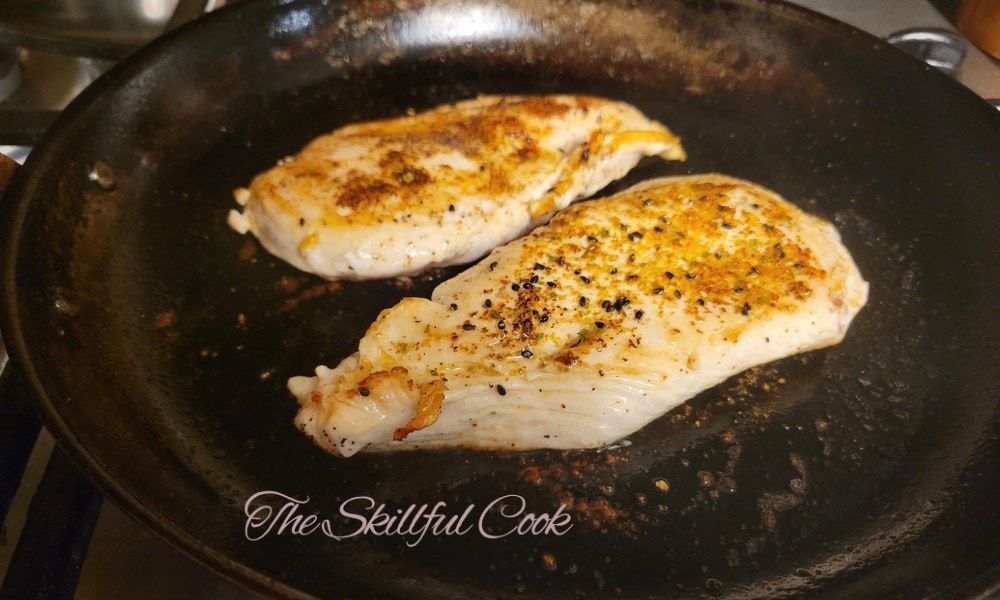
When proteins like meat and eggs stick to a poorly seasoned pan, you have to scrub the pan to remove them, damaging the seasoning even more.
6. Stew or Soup
Carbon steel is not designed for boiling, braising, or simmering liquids for a long time. If you want to make soups, stews, chili, and casseroles, or simmer sauces and jams for longer periods, then non-reactive cookware (glass, enamel-coated metal, stainless steel, ceramic) is the better choice.
7. Sugary Foods
Caramelizing sugar and making candy in carbon steel might cause the sugar to bond with the seasoning, leaving black carbonized bits in your pan and affecting the taste of your caramel. If this happens, the best way to remove it is to boil water in your pan – not try to scrub it off.
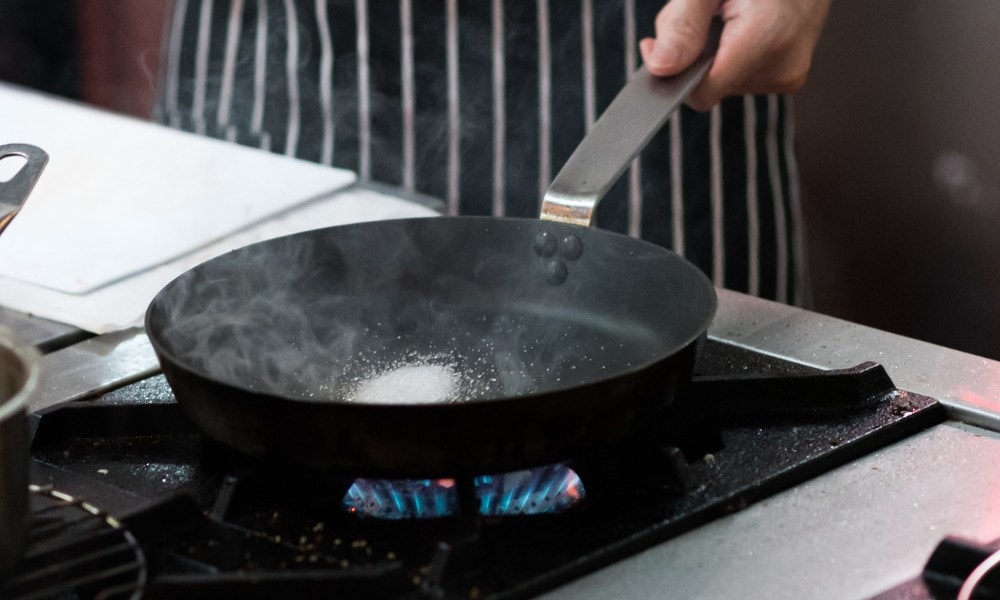
But stainless steel is a better option for candy making. Use stainless steel also for those big pots of plum jam or marmalade jams because jam is not only high in sugar, but very acidic as well.
8. Strongly flavored foods
Cooking strongly spiced or flavored foods can leave some of their flavor in the oil so that it becomes part of the seasoning. This will impact the flavor of everything you cook in the pan after it. Depending on your cooking style, this could be a positive or negative thing.
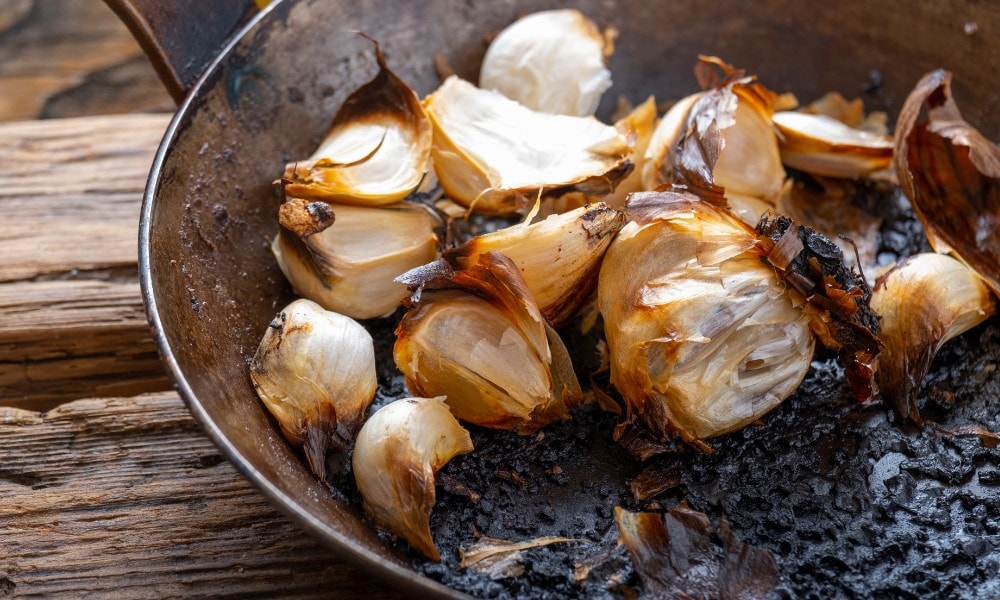
9. Frozen foods
Adding frozen foods to a hot pan is a big no-no with any cookware, but especially carbon steel. If you add frozen or cold foods to hot carbon steel, it may cause the pan to warp from thermal shock. Always defrost and bring foods to room temperature first before cooking. This also helps foods heat and cook quicker and more evenly.
10. Low Smoke Point Oils
Any oil with a low smoke point (below 350°F), such as butter, oils high in polyunsaturated fats, or unrefined plant oils, will burn quickly at high heat and emulsify, gumming up your pan. Oils with a low smoke point are flaxseed, sunflower, safflower, walnut, and almond.
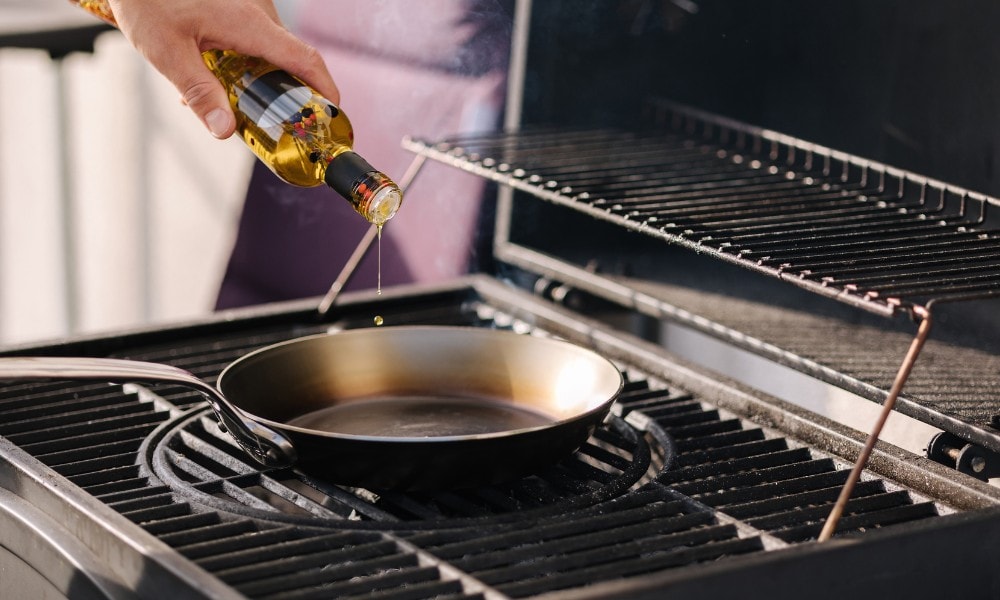
Frequently Asked Questions
What foods are best cooked on carbon steel?
Carbon steel works great for stir-fries, anything you want to quickly sauté, sear, or seal before adding to a stew. Carbon steel pans excel at high-heat cooking to sear a perfect steak or create perfect golden crusts and crispy skinned filets.
Will sugar or salt hurt carbon steel pans?
Salt should not hurt carbon steel if used normally in a well-seasoned pan. In fact, coarse salt is often used to scrub carbonized food off carbon steel while cleaning it. Carmelizing sugar or making candy in carbon steel may cause the sugar to bond with the seasoning.
Is carbon steel only good for woks?
No, not at all. Carbon steel is excellent for pans, skillets, grill pans, roasting pans, and griddles because of its high heat tolerance. This also means that it can be used on all cooktops, in ovens, and over open flames on grills or campfires.
Conclusion
Carbon steel’s even heat distribution and high heat performance make it a popular choice for chefs. If you love searing a steak, sautéing seafood, or tossing together a stir fry, then you’ll love carbon steel as much as chefs do. Just remember to season it properly, and you’ll have a great pan for years to come.

